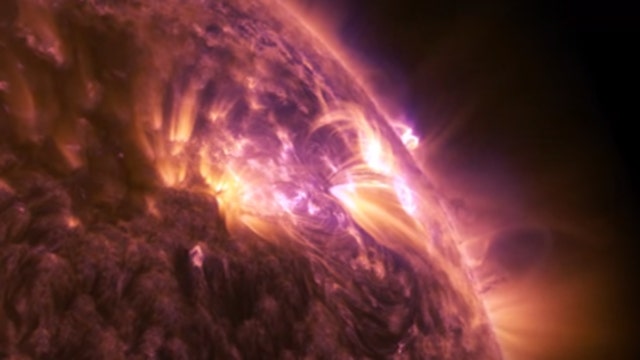New Video of the Sun’s Power
NASA releases stunning new video of the sun
On Thursday, the sun released a significant solar flare toward Earth, peaking at 11:35 a.m. EDT, scientists say.
Solar flares are powerful bursts of radiation and, although harmful radiation from flares cannot pass through the Earth’s atmosphere to physically impact humans, when intense enough they can disturb the atmosphere in the layer where GPS and communications signals travel.
The flare was classified as an X1, with the X-class being the most intense. X10 flares are considered unusually intense.
This was the second X-class flare of Solar Cycle 25, which began in December 2019.
“One of the most common forms of space weather, a geomagnetic storm refers to any time Earth’s magnetic environment, the magnetosphere, undergoes sudden and repeated change,” NASA Science explains. “Geomagnetic storms can be caused by high-speed blasts of the solar wind and when a CME connects up with the magnetosphere. The sun’s magnetic fields peel back the outermost layers of Earth’s fields changing the very shape of the magnetosphere. Magnetic storms have measurable effects worldwide, such as radio communication blackouts and power grid failures.”
The National Oceanic and Atmospheric Administration Space Weather Prediction Center said Friday that a geomagnetic storm watch is in effect this weekend.
The center said impacts to technology from such a storm are generally nominal, but it has the potential to drive auroras further away from a normal polar residence.
Electrons and protons released by solar storms can create bright auroras at lower latitudes.
Because of the latest flare, the Northern Lights may be visible over the far Northeast, upper Midwest and state of Washington – though it can be difficult to see it if you live near city lights.
Source: Read Full Article




